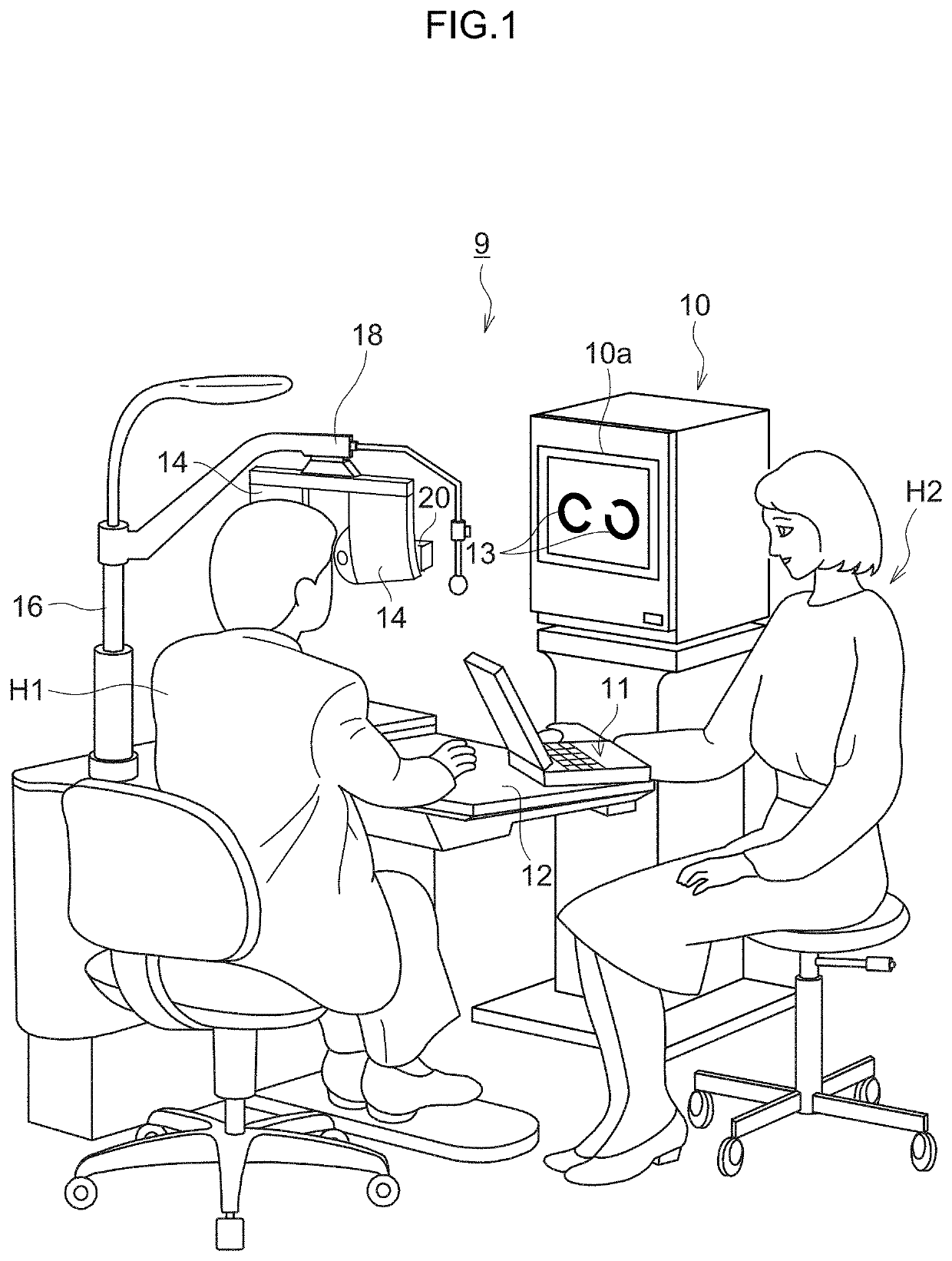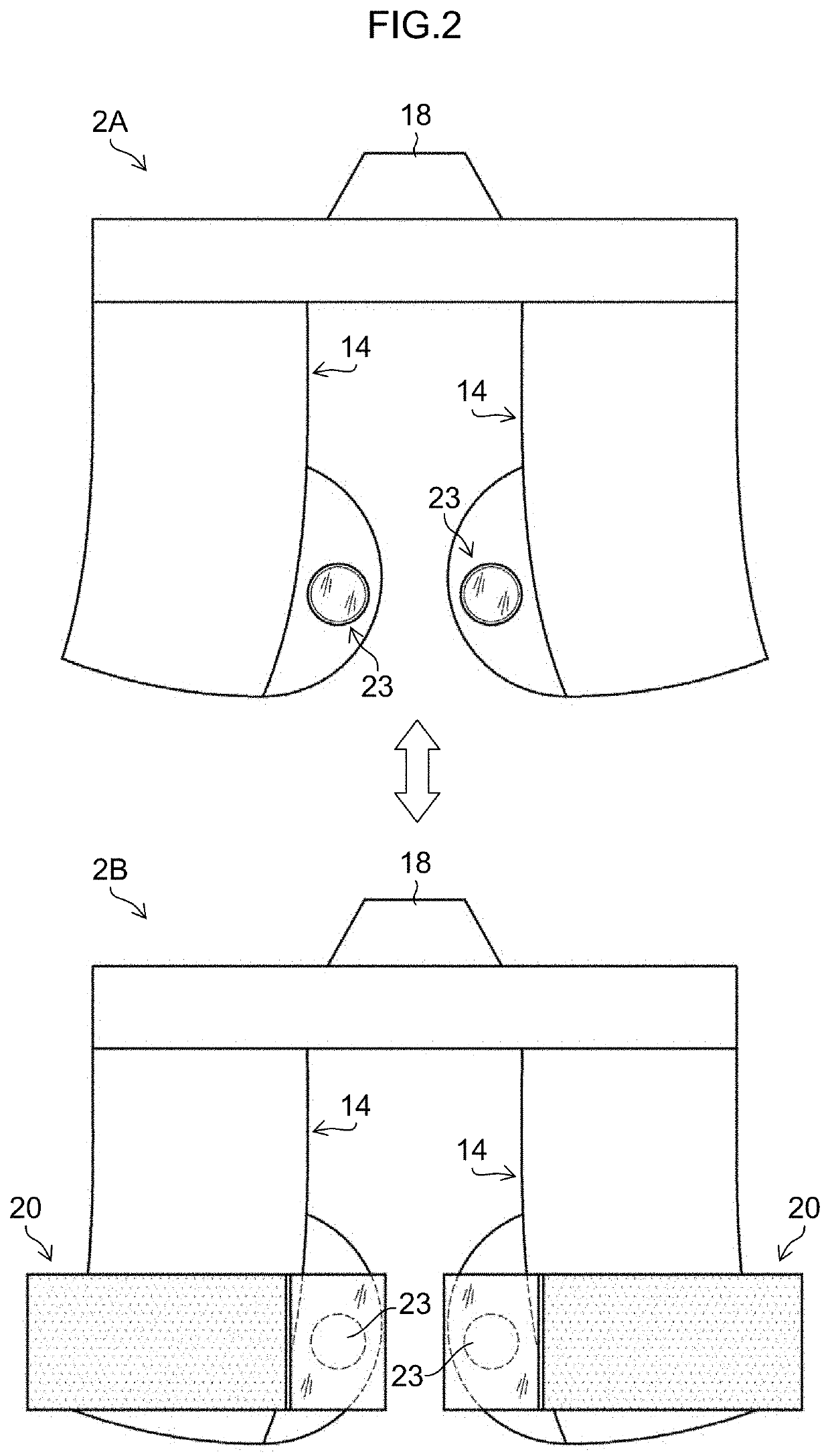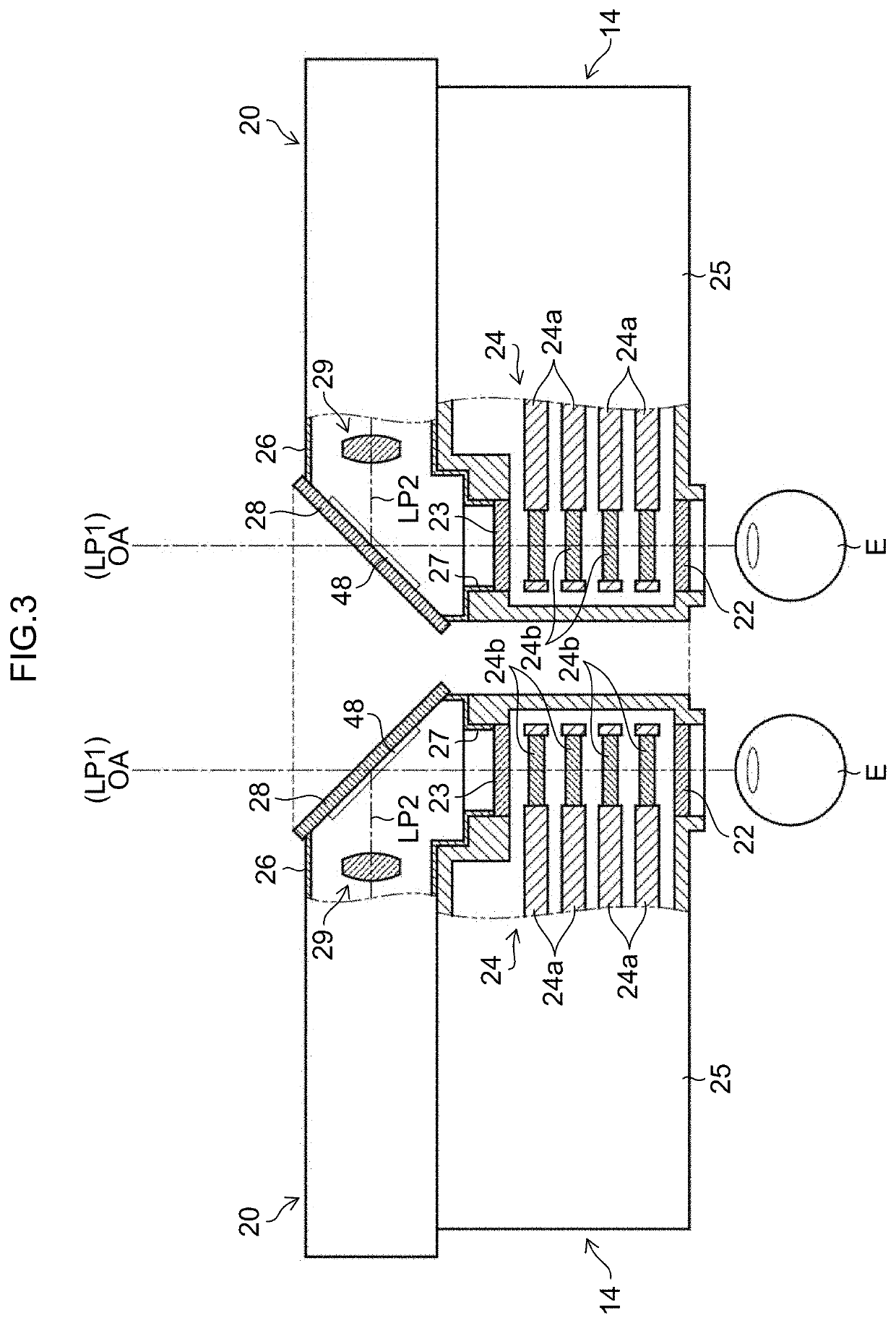Ophthalmologic device and ophthalmologic system
a technology of ophthalmologic devices and ophthalmologic systems, applied in medical science, diagnostics, skiascopy, etc., can solve the problems of not being able to directly enter, ophthalmologic devices cannot measure the ocular characteristics of subjects eyes, and ophthalmologic devices cannot feedback
- Summary
- Abstract
- Description
- Claims
- Application Information
AI Technical Summary
Benefits of technology
Problems solved by technology
Method used
Image
Examples
first embodiment
Operation of First Embodiment
[0097]FIG. 7 is a flowchart showing the flow of determination processing of a prescription value of spectacle lenses for the subject H1 using the ophthalmologic system 9 having the above configuration. As shown in FIG. 7, the examiner H2 first couples the coupling members 27 of the wavefront sensors 20 to the opening parts 23a of the second examination windows 23 of the phoropters 14. Accordingly, the wavefront sensors 20 are coupled to the phoropters 14, respectively.
[0098]Upon activation of each of the wavefront sensors 20, radiation of alignment luminous flux to the subject eye E by the alignment optical system 34, radiation of near-infrared light LA to the subject eye E from the infrared light source 99, acquisition of an observation image of the anterior eye part of the subject eye E by the anterior eye part observing system 29A, and display of the observation image by a display unit not illustrated, are performed. Based on the observation image dis...
second embodiment
[0110]FIG. 8 is a functional block diagram of the controller 11 constituting the ophthalmologic system 9 according to a second embodiment. In the first embodiment, alignment of the wavefront sensors 20 with respect to the right and left subject eyes E is performed manually. In the second embodiment, the alignment is performed automatically.
[0111]As shown in FIG. 8, the ophthalmologic system 9 of the second embodiment is basically similar in configuration to the ophthalmologic system 9 according to the first embodiment except that the controller 11 is connected to a relative moving mechanism 66 and that the wavefront sensor control unit 52 functions as an alignment detecting unit 62 and an alignment control unit 64 in addition to functioning as other units described above (see FIG. 6). Accordingly, the component members identical in function or configuration to those in the first embodiment are designated by identical reference numerals and the description thereof is omitted.
[0112]Th...
third embodiment
[0115]FIG. 9 is a sectional view of the phoropter 14 and the wavefront sensor 20 provided in the ophthalmologic system 9 according to a third embodiment, in a state before the wavefront sensor 20 is coupled to the phoropter 14. FIG. 10 is a sectional view of the phoropter 14 and the wavefront sensor 20 constituting the ophthalmologic system 9 according to the third embodiment, in a state after the wavefront sensor 20 is coupled to the phoropter 14. Here, since the phoropters 14 and the wavefront sensors 20 have a symmetrical structure, description is given by taking as an example the phoropter 14 and the wavefront sensor 20 corresponding to the right eye of the subject eyes E in FIGS. 9 and 10.
[0116]As shown in FIGS. 9 and 10, in the third embodiment, in a state where the wavefront sensor 20 is coupled to the phoropter 14, the sensor housing 26 of the wavefront sensor 20 is used as the rear side surface of the phoropter housing 25, on the side of the second examination window 23. No...
PUM
 Login to view more
Login to view more Abstract
Description
Claims
Application Information
 Login to view more
Login to view more - R&D Engineer
- R&D Manager
- IP Professional
- Industry Leading Data Capabilities
- Powerful AI technology
- Patent DNA Extraction
Browse by: Latest US Patents, China's latest patents, Technical Efficacy Thesaurus, Application Domain, Technology Topic.
© 2024 PatSnap. All rights reserved.Legal|Privacy policy|Modern Slavery Act Transparency Statement|Sitemap



